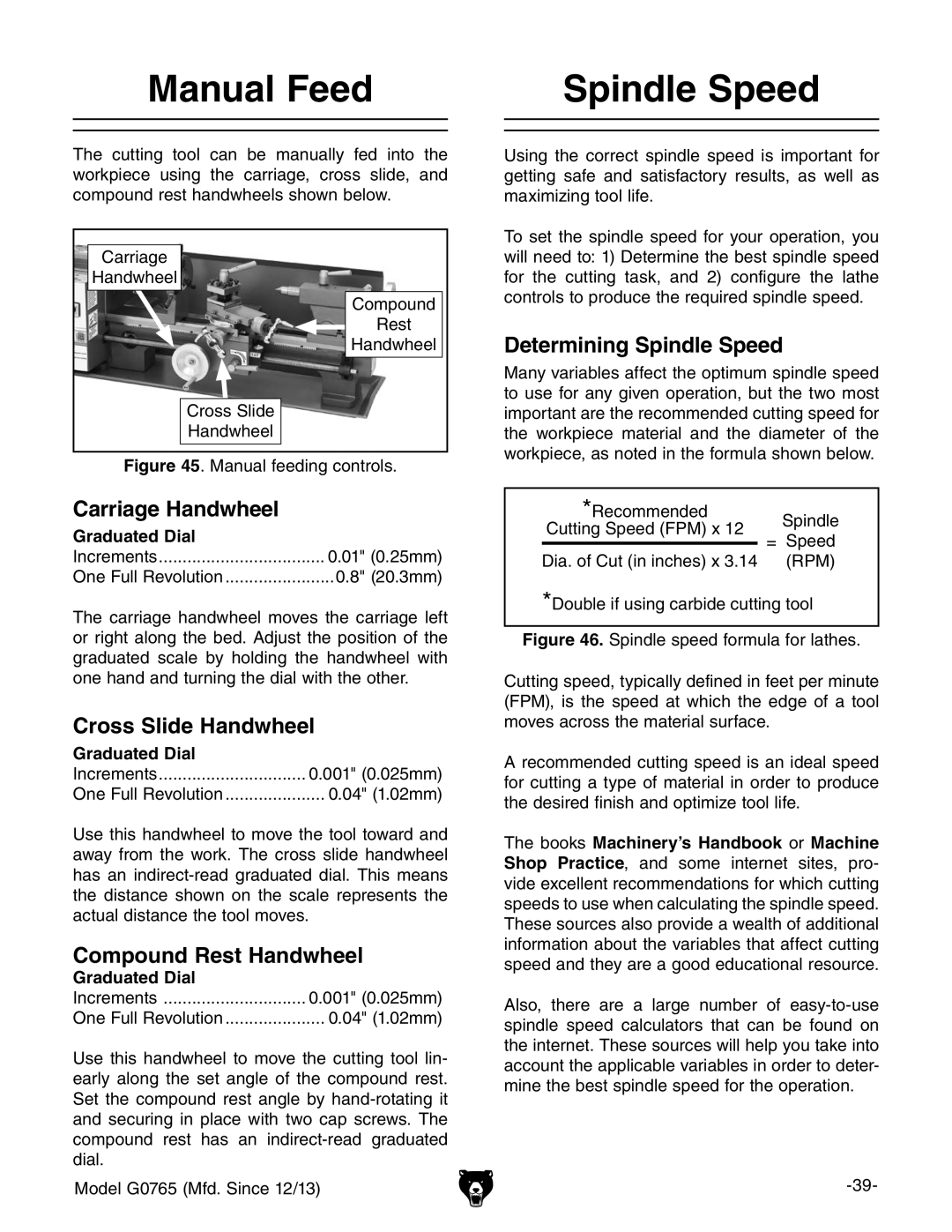
Manual Feed
The cutting tool can be manually fed into the workpiece using the carriage, cross slide, and compound rest handwheels shown below.
Carriage |
Handwheel |
Compound |
Rest |
Handwheel |
Cross Slide |
Handwheel |
Figure 45. Manual feeding controls.
Carriage Handwheel
Graduated Dial |
|
Increments | 0.01" (0.25mm) |
One Full Revolution | 0.8" (20.3mm) |
The carriage handwheel moves the carriage left or right along the bed. Adjust the position of the graduated scale by holding the handwheel with one hand and turning the dial with the other.
Cross Slide Handwheel
Graduated Dial |
|
Increments | 0.001" (0.025mm) |
One Full Revolution | 0.04" (1.02mm) |
Use this handwheel to move the tool toward and away from the work. The cross slide handwheel has an
Compound Rest Handwheel
Graduated Dial |
|
Increments | 0.001" (0.025mm) |
One Full Revolution | 0.04" (1.02mm) |
Use this handwheel to move the cutting tool lin- early along the set angle of the compound rest. Set the compound rest angle by
Model G0765 (Mfd. Since 12/13)
Spindle Speed
Using the correct spindle speed is important for getting safe and satisfactory results, as well as maximizing tool life.
To set the spindle speed for your operation, you will need to: 1) Determine the best spindle speed for the cutting task, and 2) configure the lathe controls to produce the required spindle speed.
Determining Spindle Speed
Many variables affect the optimum spindle speed to use for any given operation, but the two most important are the recommended cutting speed for the workpiece material and the diameter of the workpiece, as noted in the formula shown below.
*Recommended |
| Spindle | ||
Cutting Speed (FPM) x 12 |
| |||
= | Speed | |||
|
| |||
Dia. of Cut (in inches) x 3.14 |
| (RPM) | ||
*Double if using carbide cutting tool
